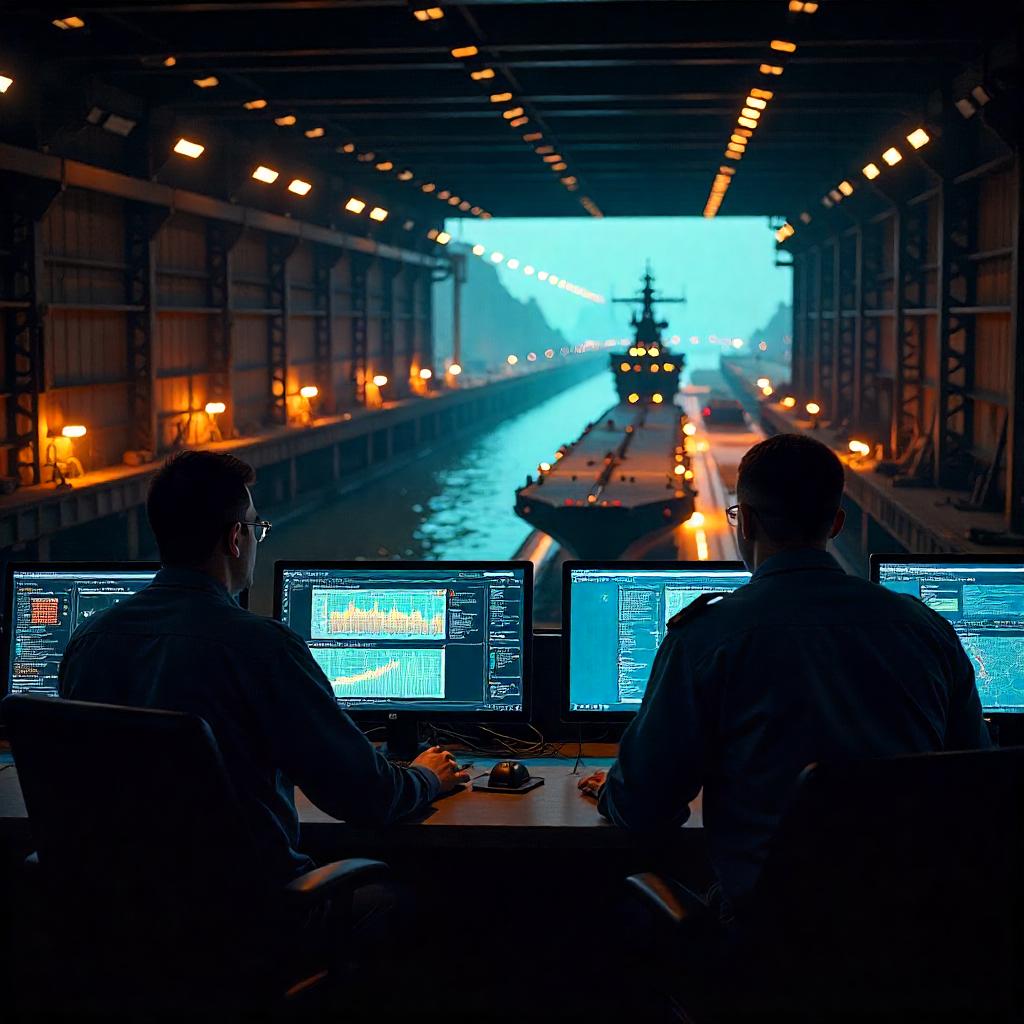Prezentare generală
Shipbuilding for the U.S. Navy is encountering significant hurdles as it struggles to keep pace with global competitors. This predicament calls attention to both the urgency for modernization and the implications for the broader logistics landscape.
The State of U.S. Shipbuilding
Current Delays and Budget Issues
American shipbuilding is falling behind. The Navy’s flagship program is currently six months overdue and far exceeds its budget constraints. This has sparked conversations about the need for urgent action in the industry.
Global Competition
International adversaries, particularly China, are swiftly enhancing their maritime infrastructure and shipbuilding capabilities. China’s activities have raised concerns, as they are reportedly closing the gap in naval strength with promising expansion plans.
Perspective pentru viitor
Room for Optimism
Despite the challenges, potential avenues for U.S. shipbuilders exist through technological advancements. The industry is slowly adapting to modern technologies that could reshape ship construction. However, time is of the essence, and quick adaptation is imperative.
Perspective de la experți din industrie
To explore a path forward, industry insights from Benjamin Plum, an associate at McKinsey & Company, highlight the daunting future of U.S. shipbuilding. “Addressing the increased demand for ships requires a focused approach,” he notes. The key areas of concern include:
- Upgrading aging infrastructure
- Attracting and retaining new talent
- Implementing innovative manufacturing techniques
The Infrastructure Challenge
According to reports, the U.S. has 154 private shipyards across various states and territories. However, only 10 of these facilities have the necessary capacity to fulfill Navy projects effectively. Many of these shipyards date back to the World War II era and have not been undergoing significant upgrades.
Plum emphasized, “Modernization of shipyards is essential,” pointing out the urgent need for new tools and improved working conditions to enhance efficiency.
Funding Constraints
Funding for the Navy’s shipbuilding projects is also a critical factor. Senator Roger Wicker highlighted the stark reality of the proposed 2026 defense budget, which slashes shipbuilding allocations to $20.8 billion, a significant drop from $37 billion. This cut raises concerns about the Navy’s future capabilities.
Comparative Analysis with China
China’s Shipbuilding Dominance
China’s dominance in the shipbuilding sector is striking, launching more substantial tonnage annually than all other nations combined. Estimates indicate that China’s shipbuilding capacity could be over 200 times greater than that of the United States, raising alarms about U.S. maritime readiness on the world stage.
Aging Maritime Workforce
Another concern raised by Plum is the aging workforce. The maritime industry is currently short of between 140,000 and 179,000 qualified workers. Recruiting a new generation of shipbuilders is essential to secure the future of this industry.
The Road Ahead for U.S. Shipbuilding
Embracing New Technologies
Despite the various challenges, the industry is beginning to adopt advanced technologies. Automated welding, digital imaging for production environments, and real-time scheduling through AI are shaping the future of shipbuilding in the U.S. This shift could enable the Navy to regain its competitive edge, although timely implementation remains crucial.
Working Towards Efficiency
Secretary of the Navy John Phelan has made efforts to address the urgent need for reform. In a few short months in the role, he has toured both domestic and foreign shipyards in search of efficiency improvements.
Conclusion: Significance of Naval Preparedness
The future of the U.S. Navy relies heavily on rapid modernization of shipbuilding facilities and workforce revitalization to keep pace with global competitors. These shipbuilding advancements not only impact national security but also underscore the importance of an effective logistics network in supporting military readiness. In the world of logistics, companies like GetTransport.com are essential for ensuring that not only military but commercial transport needs are met seamlessly, enhancing the reliability and speed of freight movement.
Bringing It All Together
In summary, the challenges faced by U.S. naval shipbuilding serve as a microcosm of global logistics. Addressing funding issues, recruitment, and embracing new technologies will be essential to revitalize the industry. The significance of an efficient supply chain in supporting military and civilian sectors cannot be understated. GetTransport.com offers competitive solutions to cater to various transport needs, ensuring reliability in shipping and logistics. With their commitment to affordability and versatility, partnering with GetTransport.com can enhance efficiency in logistics operations. For your next cargo transportation, consider the convenience and reliability of GetTransport.com. Rezervă-ți cursa!

 Provocările viitoare pentru construcția navală americană într-un peisaj concurențial">
Provocările viitoare pentru construcția navală americană într-un peisaj concurențial">